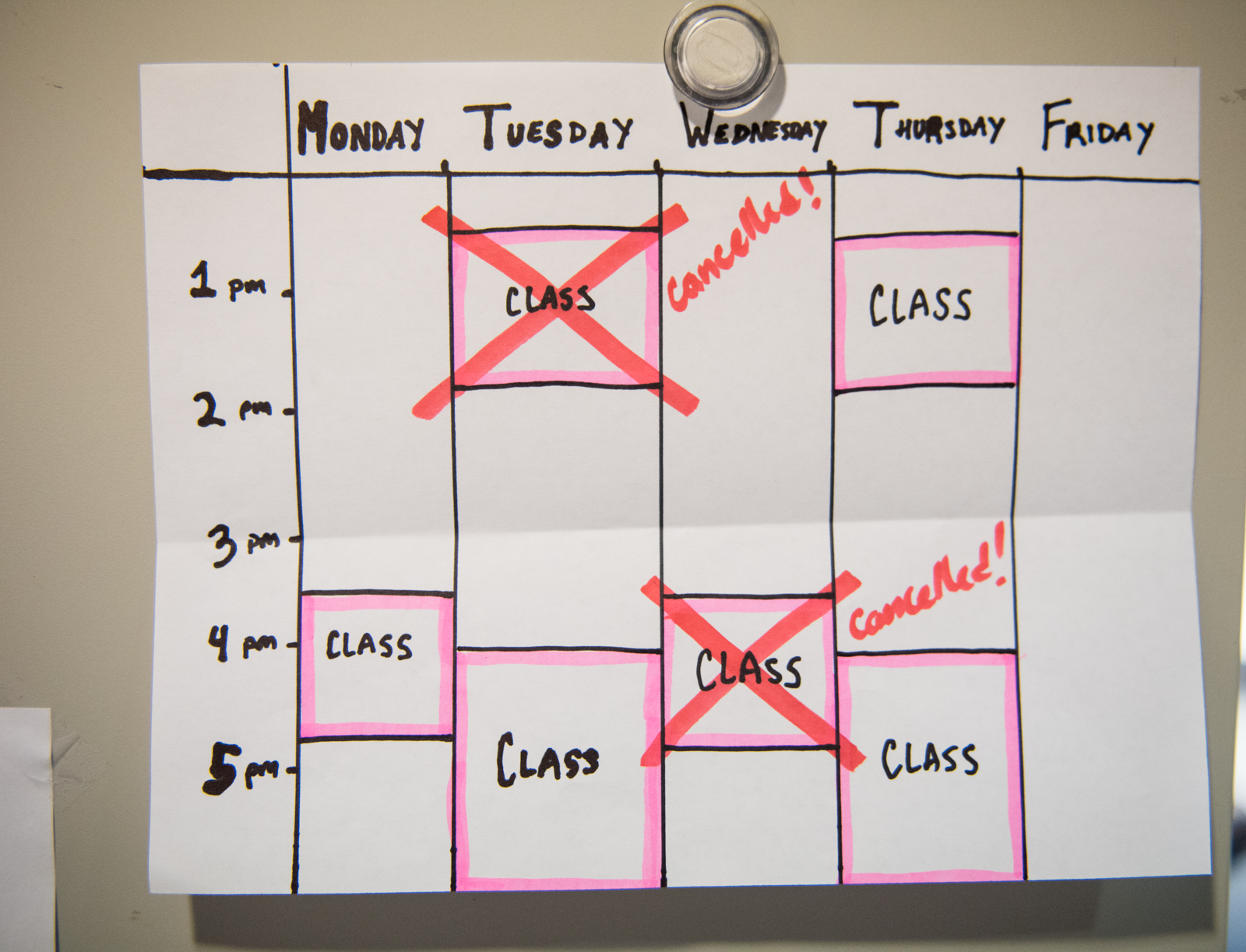Revamping class planning process would help reduce student stress, confusion

UCLA must improve its course descriptions and its class planner so that students aren’t forced to guess when the classes they want to take will be next available. (Liz Ketcham/Assistant Photo editor)
By Selby Kia
April 7, 2019 10:30 p.m.
It’s straight out of the 1990s: Websites are still poorly formatted globs of text and information is scattered across the internet. Universities are slowly moving onto the web, but finding what you need is like looking for a quarter of a needle in a haystack.
Students would think this is a thing of the past. UCLA, however, is still forcing them to go on cyber scavenger hunts in 2019.
To call the class planning process a hassle is an understatement. First, students must look under the General Catalog, which provides descriptions of all courses offered by a department, to determine the classes they might like. They then have to check their department’s website to see which courses meet their major requirements. Finally, they have to check the Schedule of Classes to see when the course in question is and if it fits into their schedule.
But not all courses are offered every quarter. Some are only taught once or twice a year. Classes that must be taken in sequence also vary in terms of the quarters they are offered, meaning students have to plan carefully to fit them into their schedules.
To make matters worse, some departments list courses that have not been offered in more than eight years, causing students to bank on taking classes that likely will not be offered anytime soon.
The lack of coordination is maddening. UCLA needs a centralized system, ideally part of the class planner feature, which shows students course descriptions and what quarters in which previous iterations of the courses have been offered. This information is vital for students to effectively plan their quarters at UCLA, and would help ensure students don’t waste countless hours – or quarters – so they can leave the university on time with a degree.
UCLA spokesperson Ricardo Vazquez said courses are offered by demand, and the Undergraduate Council may remove a course from the catalog if it has not been offered in more than five years.
But that clearly hasn’t been the case.
Take for example the math department’s program in computing courses, the majority of which have not been offered in more than 10 years.
Chris Anderson, the director of the PIC program, said the department allocates all its resources toward a handful of the PIC courses offered due to the high demand for those courses. He said if the trend continues, several of the more advanced PIC courses listed in the catalog will be removed.
This reasoning might make sense, but continuing to list those courses in the catalog is misleading. Only six of the 16 PIC courses listed on the math department’s website and in the General Catalog are regularly offered. And some of the listed courses, like “Data Structures and Algorithms,” have not been offered since 2008.
Vazquez said the schedule of course offerings is determined by each department, and some courses are infrequently offered because the professor is on leave or has retired.
But departments know which classes are and aren’t being offered regularly. Not conveying this information to students interferes with their academic careers, making it difficult to accurately plan degrees.
Lara Eng, a second-year cognitive science student, said she needs to take Psychology 100B to graduate, but doesn’t know when it’s going to be offered.
“I was trying to figure out if it would be offered in the quarters following and had no idea,” Eng said.
Eng ended up having to enroll in a summer session as a buffer because she was not sure if the course would be offered in the fall.
The Academic Senate audits all departments every eight years, which includes inquiring about courses that have not been offered in more than three years. However, this process is clearly not doing its due diligence if outdated courses are going unnoticed.
And even the university acknowledges there can often be discrepancies between what is posted in the General Catalog and what is on the department’s website.
It shouldn’t take an audit of that information every eight years for students to be informed. Misleading information can extend to the General Catalog, adding to the confusion.
A consolidated system that maintains a single source of up-to-date information would save administrators, counselors and students a lot of time and stress – instead of forcing them to rifle through websites to find information that is oftentimes outdated.
While some might say it’s up to the department and course changes cannot be anticipated, it’s not as if course availability is changing out of the blue or that departments are unaware of their classes’ histories. Not conveying this information is a result of lack of follow-up and coordination – the basics any college student should be able to expect from their university.
Classes are important. Convenience is important. A university as advanced as UCLA ought to have an updated system for students to see in one place which courses will be offered and when.
In this day and age, easier enrollment is not much to ask – especially for the school that invented the internet.

